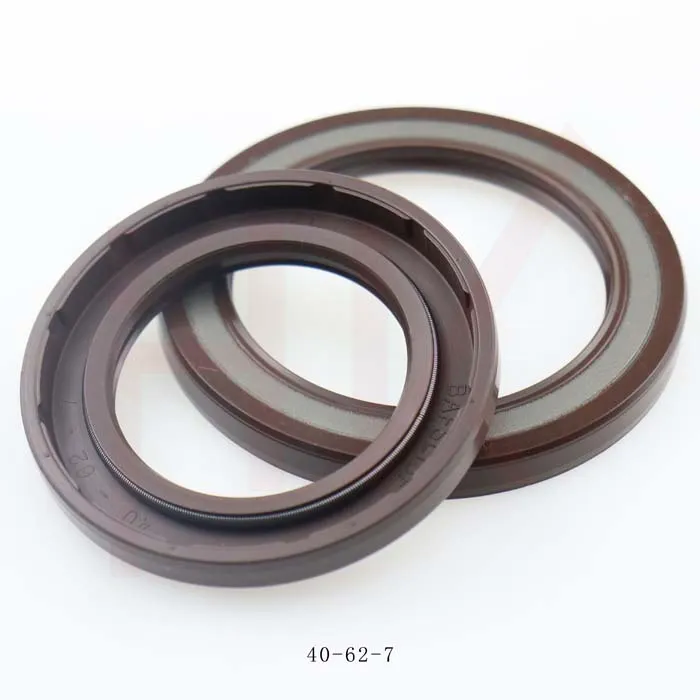stu . 29, 2024 17:20 Back to list
Essential Hydraulic Ram Seal Kit for Optimal Performance and Longevity of Equipment
Understanding Hydraulic Ram Seal Kits Importance and Maintenance
Hydraulic ram systems are essential components in various industries, offering efficient solutions for lifting, pushing, and pulling heavy loads. At the heart of these hydraulic systems lies a key component the hydraulic ram seal kit. This article explores the significance of hydraulic ram seal kits, their components, installation, maintenance, and how they contribute to the overall performance of hydraulic ram systems.
What is a Hydraulic Ram Seal Kit?
A hydraulic ram seal kit encompasses all the necessary seals and O-rings designed to prevent fluid leakage in hydraulic rams. The seals maintain the hydraulic fluid under pressure, ensuring that the system operates smoothly and efficiently. A hydraulic ram seal kit typically consists of various seals, including rod seals, piston seals, backup rings, and wipers, each playing a critical role in the functionality of the ram.
Key Components of a Hydraulic Ram Seal Kit
1. Rod Seals These seals are installed on the rod of the hydraulic ram, preventing hydraulic fluid from leaking out. They ensure that the pressure is maintained within the cylinder, allowing the ram to exert the required force.
2. Piston Seals These seals are positioned between the piston and the cylinder wall. They prevent fluid from bypassing the piston when the ram is activated, ensuring that the pressure is concentrated where it is needed.
3. Backup Rings These rings are used alongside primary seals to prevent seal extrusion, particularly in high-pressure applications. They provide additional support to the seals, extending their lifespan.
4. Wipers Wipers are installed at the outer end of the ram to remove debris, dirt, and contaminants, preventing them from entering the hydraulic system. Keeping the system clean is essential for maintaining the effectiveness of other seals.
Importance of Hydraulic Ram Seal Kits
The efficiency and reliability of hydraulic rams depend significantly on the quality and condition of their seal kits. A properly functioning seal kit minimizes leakage, which is crucial for maintaining the hydraulic fluid's pressure. When seals wear out or become damaged, a hydraulic ram can suffer from reduced performance, leading to increased energy consumption and a higher risk of system failure.
Additionally, well-maintained hydraulic ram seal kits contribute to overall safety. Hydraulic systems that experience leaks can pose serious hazards, including loss of control over machinery, environmental contamination, and even personal injuries. Regular inspection and replacement of seal kits can mitigate these risks.
hydraulic ram seal kit

Installation of Hydraulic Ram Seal Kits
Installing a hydraulic ram seal kit requires attention to detail and adherence to best practices. Here are some general steps for installation
1. Preparation Before installation, ensure that you have the correct seal kit for your hydraulic ram model. Gather necessary tools, including wrenches, pliers, and clean cloths for maintenance.
2. Disassembly Carefully disassemble the hydraulic ram, taking care to note the arrangement of seals for reinstallation. Clean all components thoroughly to remove old seal remnants and contamination.
3. Inspection Inspect all parts for wear or damage. If other components are worn, consider replacing them simultaneously to maintain overall system performance.
4. Installation of New Seals Begin installing the new seals, ensuring that they are oriented correctly. Take care to avoid damaging the seals during installation, as this can lead to premature failures.
5. Reassembly Once all seals have been installed, reassemble the hydraulic ram carefully. Ensure all components fit snugly together and are correctly torqued according to manufacturer specifications.
6. Testing After reassembly, conduct a pressure test on the hydraulic ram to ensure there are no leaks and that the system operates as expected.
Maintenance of Hydraulic Ram Seal Kits
Regular maintenance of hydraulic ram seal kits is essential for longevity and performance. Inspect the seals periodically for signs of wear, such as cracks, fraying, or hardening. Additionally, check for leaks around the seals and perform fluid analysis to detect potential issues early.
In conclusion, hydraulic ram seal kits play a vital role in the efficiency, safety, and longevity of hydraulic systems. Understanding their components, proper installation, and routine maintenance can significantly enhance the performance of hydraulic rams, ensuring they operate reliably in demanding environments. Regular attention to these kits not only saves costs in the long run but also promotes a safe working environment.
-
TCN Oil Seal Metal Ring Reinforcement for Heavy Machinery
NewsJul.25,2025
-
Rotary Lip Seal Spring-Loaded Design for High-Speed Applications
NewsJul.25,2025
-
Hydraulic Cylinder Seals Polyurethane Material for High-Impact Jobs
NewsJul.25,2025
-
High Pressure Oil Seal Polyurethane Coating Wear Resistance
NewsJul.25,2025
-
Dust Proof Seal Double Lip Design for Construction Equipment
NewsJul.25,2025
-
Hub Seal Polyurethane Wear Resistance in Agricultural Vehicles
NewsJul.25,2025
-
The Trans-formative Journey of Wheel Hub Oil Seals
NewsJun.06,2025
Products categories
















